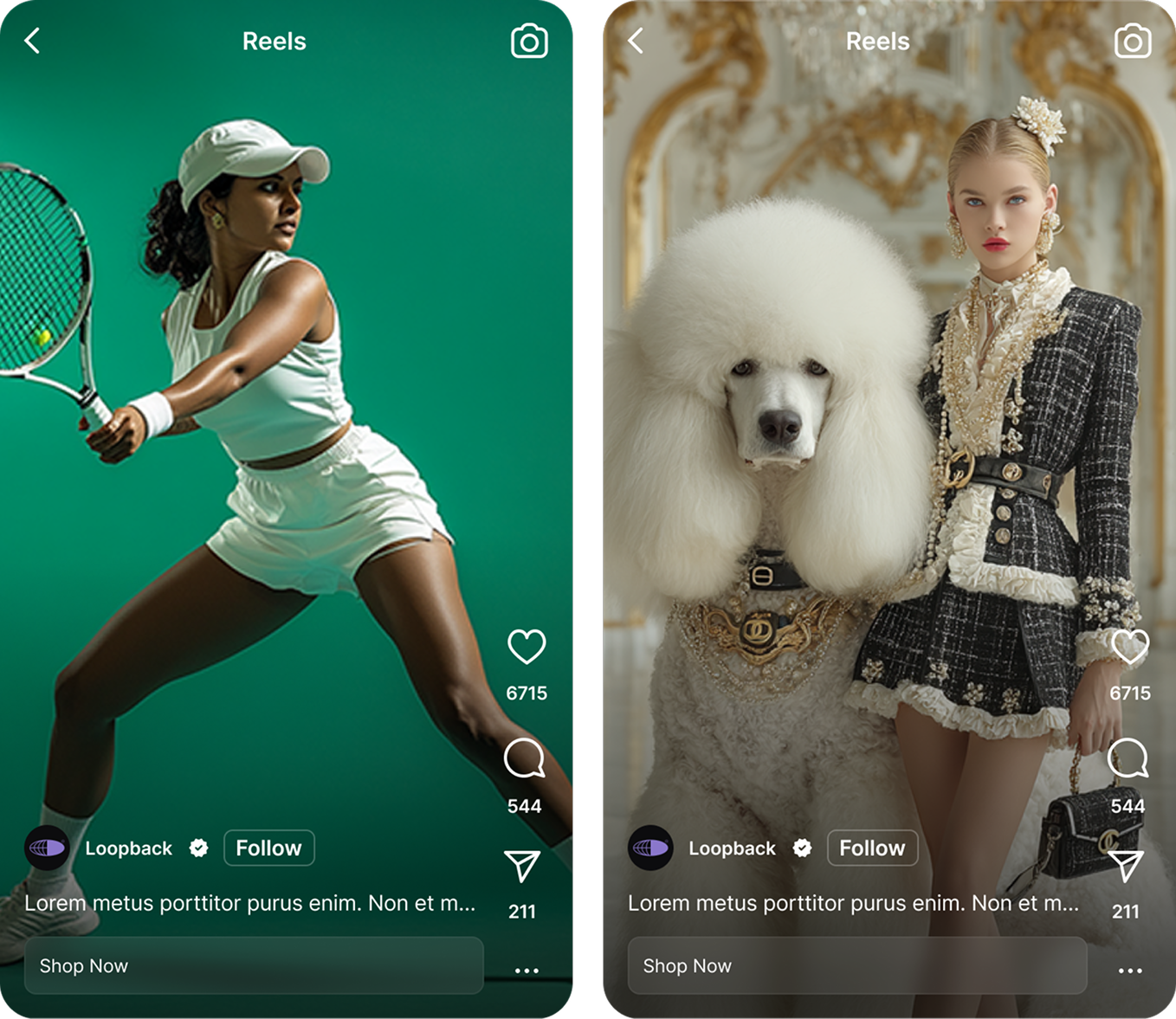How to Prep Your Creator Campaigns for Peak Season in 30 Days

How to Prep Your Creator Campaigns for Peak Season in 30 Days
Peak season doesn’t reward last-minute inspiration — it rewards disciplined planning and a ruthless measurement plan. In a 30-day sprint you must set revenue and ROAS targets, name owners for every workstream, and lock a delivery cadence that turns creators into reliable media channels [4]. Allocate a deliberate 10–15% of your pre-peak media to brand/upper funnel to lift incremental ROAS and preserve performance dollars for scaling proven creators [2] — then agree a daily/bi-weekly reporting rhythm to move faster than your competitors.
1) The 30-day sprint: set objectives, owners, and a winning cadence
Day 0 = governance. Start by translating business goals into creator KPIs: dollar targets, guardrails for ROAS/CPA, required content volume, and the channel mix you’ll use to deliver those numbers. Create a compact war room that includes creator partnerships, paid media, ecommerce/product, merchandising, legal, BI, and CX. Assign a DRI for each stream and a single campaign lead to arbitrate tradeoffs and speed decisions.
Compress the usual 4–6 week runway into a 30-day calendar with locked milestones: offer finalization, creator shortlist, first-draft due dates, ad flighting windows, and shipping cutoffs. Early planning buys better hooks, cleaner UGC, and faster learning loops.
Budget the month intentionally: set aside 10–15% of pre-peak spend for upper-funnel awareness to increase the pool of incremental converters, and keep the majority of funds flexible for scaling winning creators. Define the KPI ladder — leading indicators (hook rate, 3s view, CTR, saves) mapped to business outcomes (ATC, CVR, AOV, ROAS) — and set reporting cadence: daily tactical dashboards and twice-weekly strategy reviews.
2) Week 1 — strategy lock: seasonal opportunity, offers, and channel plan
Pick the seasonal moment and hero SKUs
Choose the peak moment that aligns to your category and audience demand curve — whether it’s BFCM, a gifting window, or a vertical-specific surge. Audit last year’s creative winners and competitive gaps to decide which SKUs become the heroes. Build bundles, limited drops, and vanity URLs mapped to creators so you can trace performance and give creators a clear commercial hook.
Creator campaign angles that convert
Prioritize angles that fit intent: gifting guides and wishlists for low-intent browsers; routines, before-and-after and social-proof compilations for buyers who need validation; unboxings and live shopping for urgency. Map creators to audience archetypes (busy parents, commuters, hobbyists) and prioritize contextual trust over raw reach — the right niche creator often moves more product than a broad celebrity.
Use a multi-platform distribution blueprint: short-form Reels/TikTok and YouTube Shorts for discovery, Stories with link stickers and email/site UGC modules for direct CTAs, and paid amplification on proven assets to scale winners.productlondondesign
First-mention case study: Loop Earplugs case study — use this example to justify niche community targeting and paid amplification as a combined tactic to grow new audiences ahead of peak.
Loop Earplugs case study
 Learn more
Learn more
Finalize the calendar with tentpole dates, creator post windows, ad flighting, and shipping cutoffs. Communicate expectations to creators: deliverable counts, formats, deadlines, usage rights, whitelisting terms and paid amplification triggers so there are no surprises when you scale.
3) Weeks 1–2 — source, vet, and brief creators with incentive alignment
Shortlist using fit signals, not vanity metrics
Build a roster from performance-first signals: audience quality, category authority, historical ad performance (if available), content style, brand safety, and capacity to post in the peak window. Micro creators with strong contextual trust often outperform generic reach-focused partners in both CVR and comment quality.
Compensation architecture that scales
Match comp to the job: gifting for product-forward micro content, flat fees for hero assets and tight turnarounds, affiliate/performance tiers for volume conversions, and explicit usage/paid rights buyouts for assets you plan to run as ads. Spell out performance bonuses and cadence incentives to keep creators aligned to conversion outcomes.
When gifting makes sense: product gifting can drastically reduce cash outlay while producing high-return content for categories with strong usage moments. First-mention case study: Secret Sales case study shows gifting can deliver outsized ROAS when paired with tight briefs and amplification plans.
Secret Sales case study
 Learn more
Learn more
Write briefs that preserve creator voice
Create briefs that state non-negotiables (claims, FTC disclosures, hero benefits, CTA, landing links) while offering suggested hooks and examples to guide creators — and include clear approval SLAs and reshoot buffers. Collect tracking links and unique promo codes at onboarding to avoid last-minute tagging errors.
Lock compliance early: refresh FTC disclosure language and platform policy guidance, especially for regulated categories or giveaways, and centralize rights management and file naming in one place for fast access when you need ad-ready assets.
4) Weeks 2–3 — build the content and ads engine that will scale in-peak
Organize assets by job-to-be-done
Label UGC variants by platform and placement (Reels, TikTok, Stories, Shorts, feed, Spark/Partnership Ads), and create thumbnails, subtitles, cutdowns and static derivatives. Pre-label each asset with its intended job — awareness, mid-funnel education, or last-chance urgency — so paid teams can route spend immediately.
Creative testing and adization
Prioritize hooks and the first three seconds: test problem–solution arcs, price messaging, social proof and offer framing. Secure usage rights early and run creator-handle powered ads to lift CTR, CVR and ROAS — practical proof is strong: Veloretti’s creator ads produced materially higher ROAS and lower CPA when original creator handles were preserved.
First-mention case study: Veloretti case study — use it to justify paying for handle-powered ads versus generic creative lifts.
Veloretti case study
 Learn more
Learn more
Platform checklist: sequence teaser → hero → last-chance on Instagram and TikTok; Story frames with swipe links for direct response; Meta Advantage+ Shopping and creator whitelisting for scaling winners; and YouTube Shorts for higher-intent education and retargeting. Coordinate with paid search and retail media to synchronize promo terms, bids, and creatives so you don’t bid against your creator-driven demand.
Operational QA: verify pixel and CAPI, UTMs, catalogs, promo codes and deep links. Prepare backup creatives to swap for fatigue and label every asset so your media buyer can scale winners within hours, not days.
5) Week 3 — conversion readiness and sales operations that won’t crack under peak
Speed-first landing experience
Tune landing pages for speed and clarity: compress media, lazy-load non-essential elements, and surface shipping cutoffs and returns prominently. Slow pages over three seconds hurt sessions and satisfaction, so prioritize page speed fixes in week 3.useinsider
Offer and checkout engineering
Deploy gift-finder widgets, pre-built bundles, one-click add sets and cart progress tied to free shipping thresholds. Harden checkout: express wallets, address autocomplete, clear promo handling and failovers for surges in code usage. Work with 3PLs to set inventory buffers for creator-driven spikes and prepare CX macros for promo and shipping queries.
Measurement guardrails: server-side tracking, unique codes per creator, post-purchase attribution surveys, and BI dashboards for daily readouts so you can allocate spend to creators who materially move AOV and ROAS.
6) Week 4 — launch day to last-chance: orchestrate, monitor, and scale what wins
T-minus 7 day scrub
Final content passes, rights windows, CTA and disclaimer checks, and dry runs for links, deep links and promo codes. Stress-test checkout with QA orders and ensure backup creatives are queued for rapid swaps.
Launch day command center
Stand up a command center with live dashboards for hook rate, thumbs-stop rate, CPC/CTR, ATC, CVR and ROAS by creator and placement. Use color-coded alerts for action thresholds. Shift spend to outperformers, duplicate winners into new lookalike audiences, and daypart ads where performance indicates higher conversion windows.
Mid-flight creator ops: surge-slot posts on peak days, seed 2–3 backup creators for fresh assets, and compile top comments and UGC into new edits within 24–48 hours to keep social proof fresh.
7) Post-peak debrief and the always-on creator flywheel
Run a clear post-mortem: what worked by hook, angle, creator, format, audience and offer; quantify incrementality and halo impacts on branded search and paid social efficiency. Turn peak winners into evergreen performers by renewing usage rights, building a creative library, and scheduling monthly refreshes with new hooks. Rebook top creators for Q1 retention moments, negotiate annual packages, and co-create limited drops where it makes sense. Templatize briefs, QA checklists and dashboards so next peak requires fewer meetings and more action.
Final practical reminder: manage your paid bids actively during peak — brands that do so can see meaningful conversion uplifts, and synchronizing ad bids with creator activations avoids bidding against your own content.onrampfunds
Synthesis — how the 30-day sprint compounds into an always-on flywheel
In 30 days you move from idea to a repeatable, measurable creator engine: lock objectives and owners, finalize offers and channels, recruit creators with aligned incentives, produce ad-ready assets, validate them in paid tests, harden conversion paths, and execute a day-of command center that scales winners. The trick is not a single clever post — it’s the system you build to detect winners and re-deploy them as paid creative, repeatedly.
Start each sprint with a short measurement plan: lead indicators to watch, thresholds that trigger amplification, and clear ownership for every alert. Keep a small reserve of budget for surprise high-performers and hold 1–2 creator slots for last-minute surges. After peak, harvest learnings into templates, renew rights, and keep your highest-ROAS creators in rotation as an always-on acquisition channel.
If you want to move faster without adding headcount, try a tool that centralizes discovery, contracts, rights, tracking and paid amplification so you can spend more time iterating and less time firefighting. Ready to make creator marketing reliably profitable? Book a short call and see how a performance-first system turns one-off creators into compounding acquisition engines — schedule a call with The Cirqle.
Get started with The Cirqle today.
Give your team the power and speed they need to find the right partners and grow your brand.
%201.avif)






